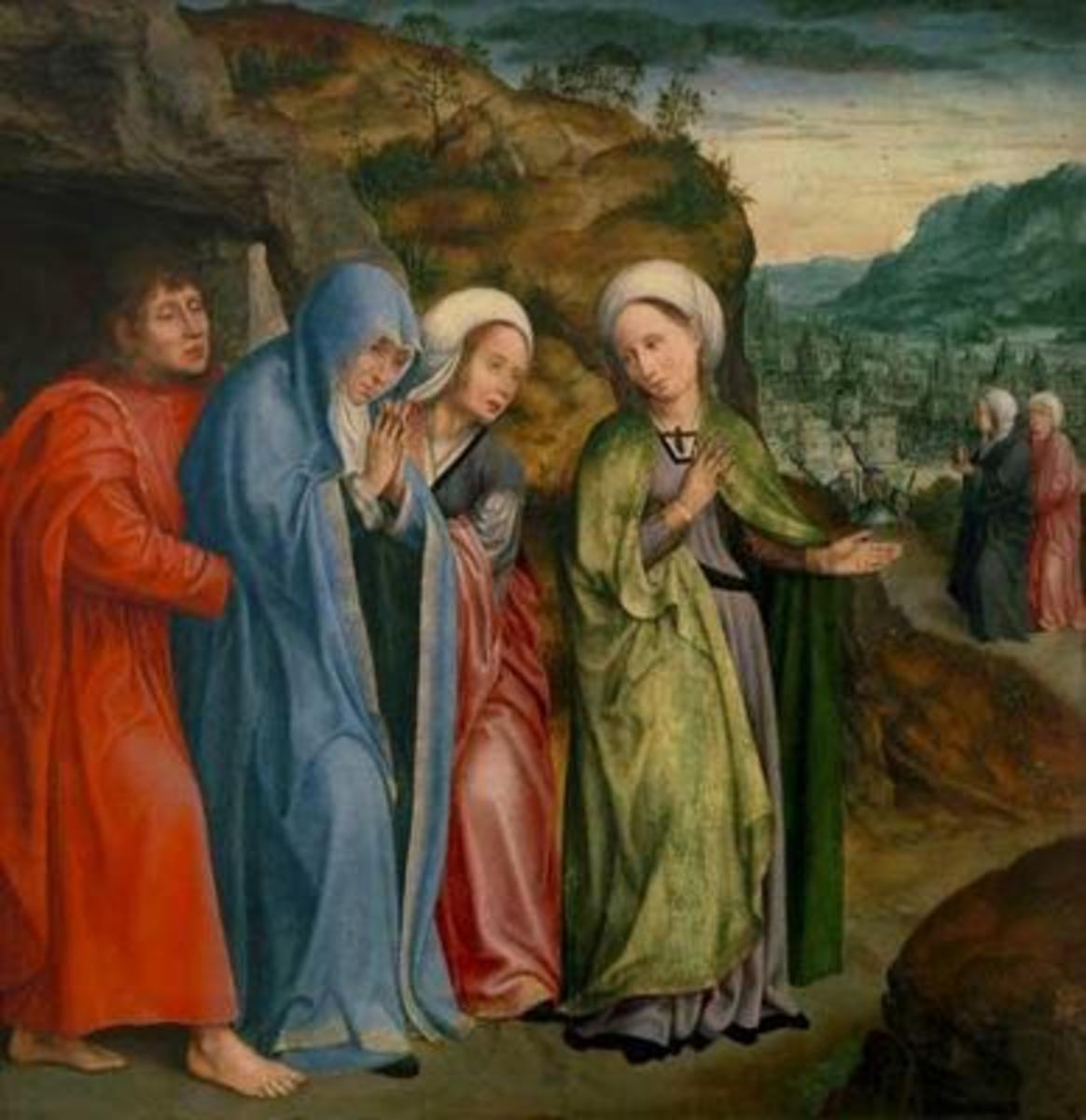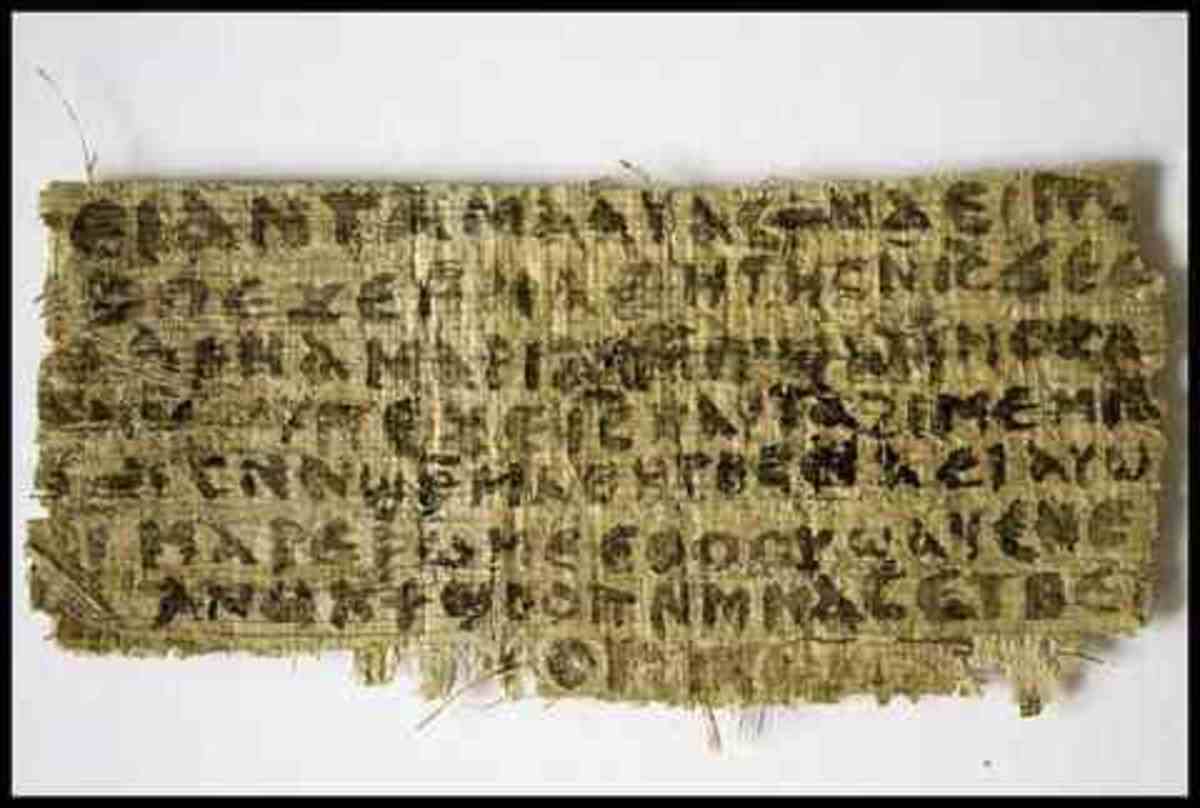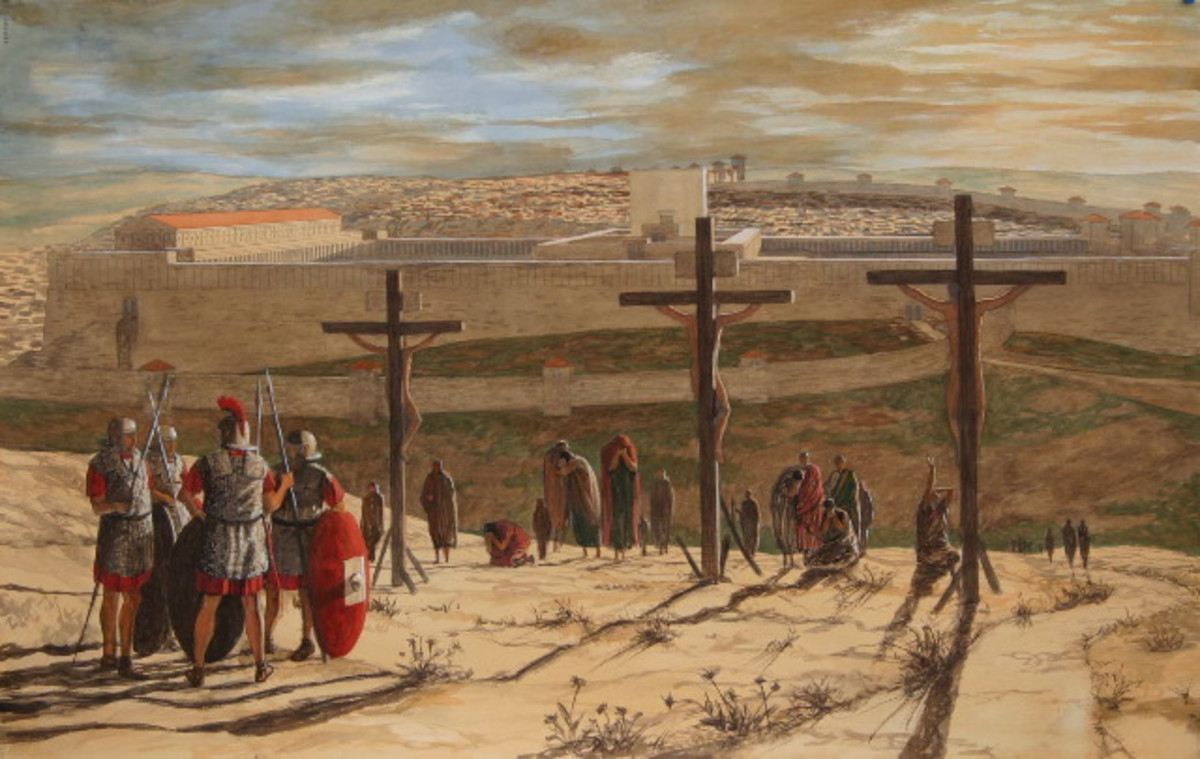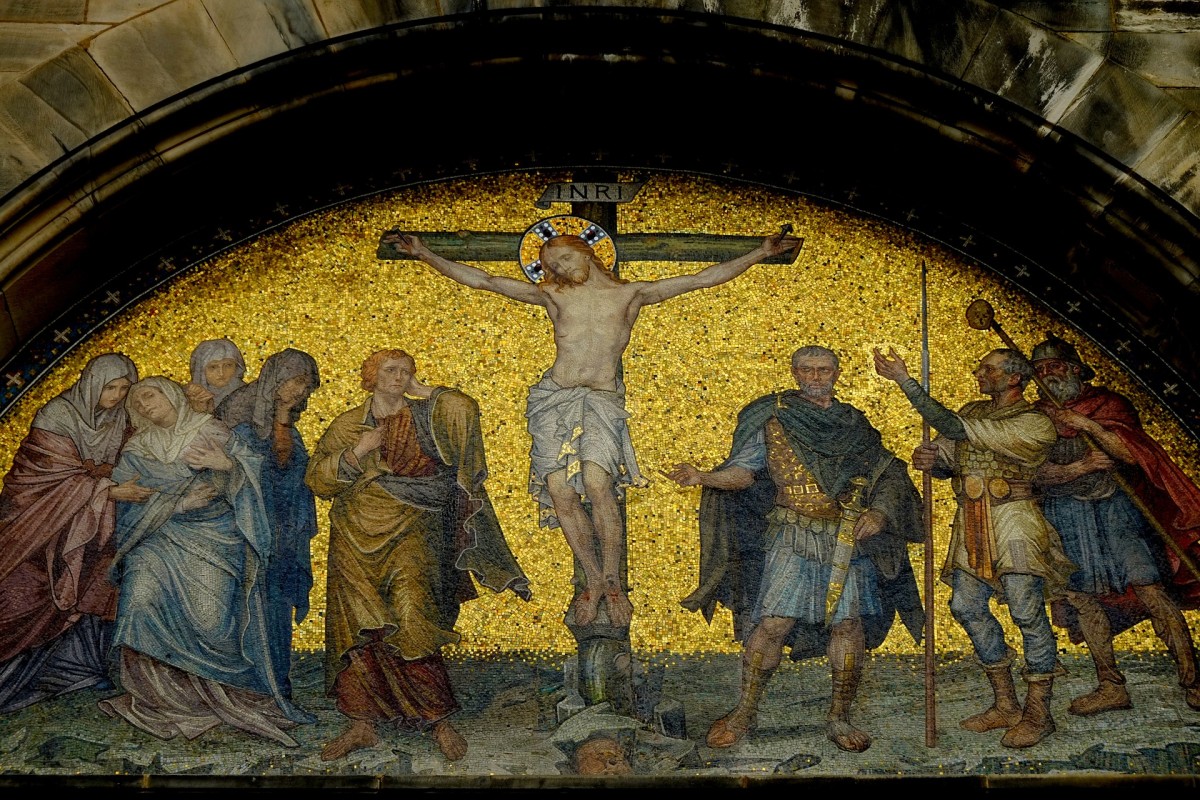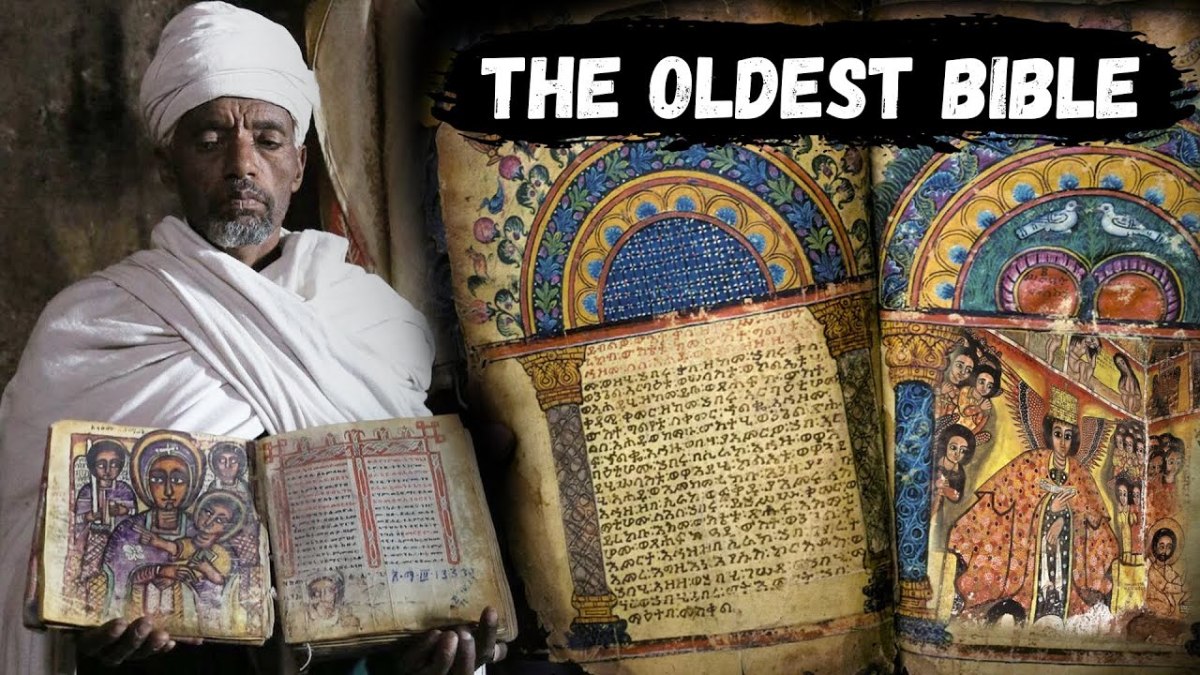Bible: What Does John 20 Teach Us About Jesus' Post-Resurrection Appearances?
The Apostle John
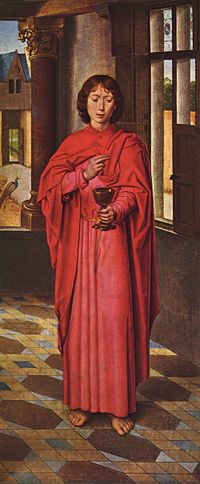
The Apostle Peter
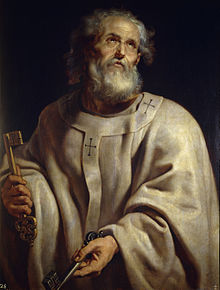
Jesus' Grave Clothes
view quiz statisticsMary at the Tomb
The Apostle John considers Mary Magdalene's role in his account of Resurrection morning, but Matthew and Mark mention that other women accompany her to Jesus’ tomb at an early hour.
[According to John, it was still dark; Mark records that the sun had just risen [16:1]; Matthew says that Sunday had just begun to “dawn” (28:1)].
She finds the huge gola nowhere near the sepulcher’s entrance (v. 1; cf. Mt. 28:1; Mark 16:1).
[The Greek word airo in its middle-passive form signifies that the stone had been lifted up and carried away.
The English translation suggests that it was merely rolled away, but such does not seem to have been the case.]
Racing back to the apostles’ hideout, Mary reports the "disappearance" of the Lord’s body to Peter and John (v. 2).
[John “fast forwards” from Mary’s seeing the stone standing far from the tomb, past her (and the other women’s) investigation of the tomb’s contents and their conversation with angels, to her telling the apostles that someone had taken away Jesus’ body.
According to Luke, she, Jesus’ mother, Joanna, Salome and other women all saw and talked to the angel sitting upon the gola, who told them that Jesus had risen.
Why, then, does John have Mary (and the others) delete this news from her account? (Matt. 28:1-8; Luke 24:1-10).]
Both apostles run to the tomb together (vv. 3-4a)—John not only outpacing Peter (v. 4), but also not blundering into the burial place as does the latter (vv. 5-6).
[How should we consider these observations by John?]
They discover “the linen cloths lying there” (vv. 5-6) and the face cloth “folded together in a place by itself” (v. 7).
Now entering the tomb—he had seen the linen cloths from the outside; now he sees everything more clearly—, John "believes" (v. 8).
[It is interesting that Luke should not even mention that John accompanied Peter to the tomb (24:12).
Ryrie’s note here provides an excellent explanation of what the apostles saw (New Testament Study Bible, 157).]
Despite all of Jesus’ instruction, both Peter and John still did not understand the Scriptural testimony to Christ’s resurrection (v. 9; cf. Ps. 16:10).
[Does this verse mean that, even after seeing the grave clothes, they still did not understand that He had risen from the dead, or does it suggest they did not understand that the Old Testament prophesied this event?]
After witnessing the results of this miraculous event, they go to their private homes and apparently do not return to the apostolic hideout (v. 10).
[Perhaps they wanted to ponder privately the implications of Christ’s not being in the tomb.]
Angel at Jesus' Tomb
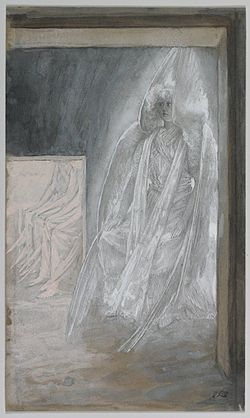
Mary Magdalene and the Angel
Although John does not record that Mary Magdalene followed him and Peter, she obviously did; for after the two men leave the tomb, she remains behind to mourn the absence of Jesus’ body (v. 11).
[She must have been hidden from the apostles, for surely they would have told her about the grave clothes.
The narrative leads the reader to believe that Mary stood outside at the same time the apostles were inside inspecting the scene.
Apparently, she arrived shortly after they left, or they left the premises without seeing her.]
Looking into the tomb, she sees two more angels (who must have re-appeared as soon as the apostles departed) sitting where the body once lay, and the spokesperson asks her why she is crying (vv. 12-13a).
Mary still believes that someone (namely, the authorities or grave robbers) took Jesus’ body away, and kept its location secret from her (v. 13b).
The Identity of the Man Near the Tomb
view quiz statisticsMary Magdalene Meets Her Risen Lord
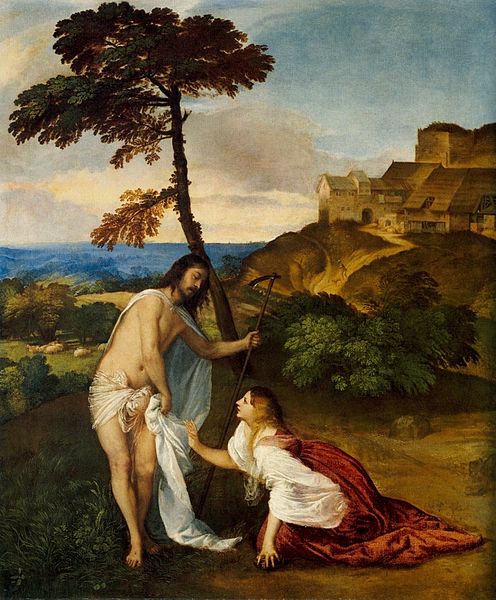
The Gardener?
Distracted by someone’s presence nearby, she turns to see Jesus; however, Mary does not recognize Him (v. 14).
[Either His resurrected body somehow makes Him look different, or Mary's emotions are too distraught for her to register the familiar facts.]
Not only does Jesus reiterate the angel’s question, but He also asks the leading query, “Whom are you seeking?” (v. 15a).
Thinking emotionally, Mary, addressing whom she supposes to be the gardener, pleads with Him to lead her to Jesus’ body so that she can “take Him away” (v. 15b).
When Jesus finally removes the veil from her eyes, so to speak, and addresses her, she exclaims “Teacher” and begins to cling to Him (vv. 16-17a).
[Does she grasp His feet, or does she try to embrace Him?]
He tells her not to do so, for He “has not yet ascended to My Father” (v. 17a).
[Does that statement mean that clinging (or even more friendly contact) will only be appropriate after His ascension?
What possible harm could an embrace cause before He returns to the Father?
A possible answer is that Jesus is now her resurrected Lord, not just her loving Teacher.]
Mary reports back to the remaining apostles both her encounter with the Lord and His announcement of the future Ascension (vv. 17b-18).
[Although Jesus maintains a unique relationship with the Father as His “one-of-a-kind” Son, the second hypostasis of the Triune Godhead, He is still the Elder Brother of the apostles and of all believers.]
Jesus: "It is I."
view quiz statisticsA Post-Resurrection Appearance
On Sunday evening Jesus “invades” the apostles’ hideout, speaks “Shalom ittechem,” and identifies Himself as their resurrected Lord by showing them His wounds (vv. 19-20a).
The overjoyed men receive both His greeting and their apostolic commission from Him (vv. 20b-21).
[Since it is evening, Peter and John are probably visiting with the others and are undoubtedly telling them of the Resurrection.]
Christ confers the Holy Spirit to them by breathing upon them (v. 22).
[A symbolic gesture, this “breathing” probably caused them to be “filled with the Spirit.”
This "filling" would enable them to be faithful witnesses during the fifty days until the Pentecost outpouring.]
The Spirit grants them authority to declare both forgiveness and retention of sins, depending upon how individuals respond to the gospel (v. 23).
Thomas: "My Lord and My God"
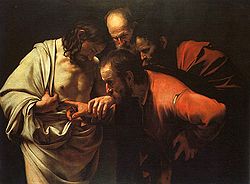
Convincing Thomas
For an unspecified reason—perhaps his serious doubts kept him away—Thomas was not present with the others at this time.
Sometime during that week, the other disciples tell him they have seen the resurrected Lord (vv. 24-25a).
Not satisfied with their testimony, however, Thomas demands tangible proof, declaring he must not only see Christ but also physically inspect His wounds before he would believe (v. 25).
Jesus makes Thomas wait several days before specifically supplying his need for substantial evidence, appearing in the midst of the Eleven at their hideout (v. 26).
[John makes it clear that Christ’s resurrection body can enter rooms through solid walls and closed doors.]
After greeting them, Jesus turns to Thomas and offers him the opportunity to do exactly what he had required in order for him to believe (v. 27).
[Obviously, for Christ to have known what Thomas needed to see and do in order to believe, He would have had to have been present invisibly when the disciple made this demand.]
The text is silent about whether Thomas actually goes forward and touches the Lord.
Iit appears, though, that seeing Him and hearing His offer to touch Him provide him with sufficient evidence to declare Christ as his personal Master and God (v. 28).
Jesus’ final statement hints at the special "blessedness" of those who do not require proof—i.e., to see Christ in the flesh—before they believe.
Those who see and believe God still accepts; however, the Lord apparently confers a “different” blessing upon those who do not see and yet believe (v. 29).
Purpose of John's Gospel
view quiz statisticsThe Apostle John's Two-Fold Purpose
John now summarizes his two-fold purpose for composing his gospel and for recording several of Jesus’ “signs.”
Admitting that he has not included many of the Lord’s miracles, the apostle nevertheless states that he (actually, the Spirit) chose the ones he did so that
(1) his readership (and audience) might believe that Christ is the incarnate God; and
(2) they might receive “life in His name” as the result of believing (vv. 30-31).
[Christ receives glory through the worship of believers; believers receive eternal life and glory through trusting Jesus as their personal Lord and Savior.]
© 2014 glynch1


